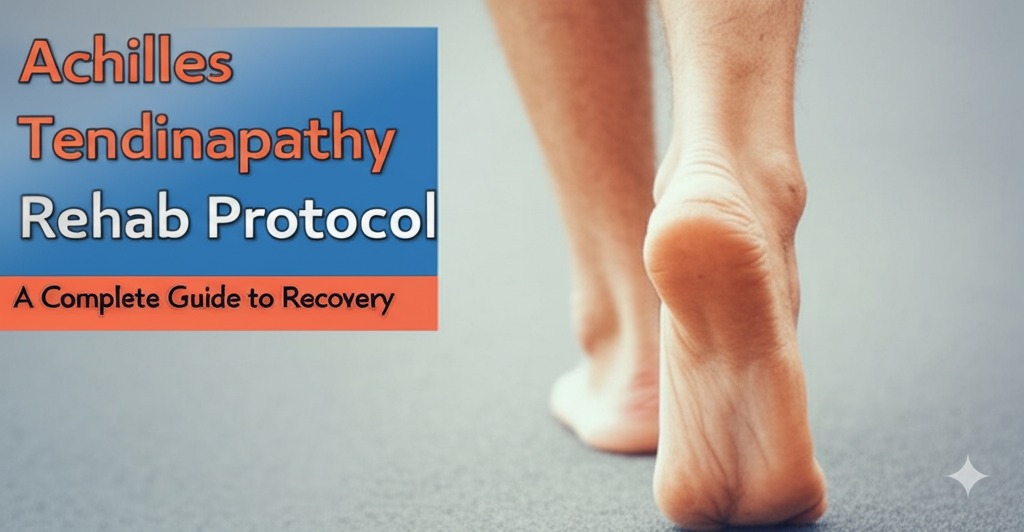Introduction: Finding Relief from Achilles Pain
If you’ve ever felt a sharp, nagging pain in your heel or the back of your ankle during a run or after a workout, you might be dealing with Achilles tendinopathy. This common overuse injury can sideline even the most dedicated athletes. But here’s the good news: with the right rehab protocol, you can recover stronger than ever. In this article, we’ll walk you through a comprehensive, evidence-based approach to Achilles tendinopathy rehabilitation that prioritizes healing, strengthening, and long-term injury prevention.
What Is Achilles Tendinopathy?
Achilles tendinopathy is a condition involving degeneration or irritation of the Achilles tendon, the thick band connecting your calf muscles to your heel bone. It often results from repetitive strain, poor biomechanics, or inadequate recovery.
Key Symptoms
- Gradual onset of pain in the back of the ankle
- Stiffness, especially in the morning
- Swelling or thickening of the tendon
- Pain during or after physical activity
Understanding the root causes and symptoms is the first step in creating an effective rehab plan.
Phase 1: Pain Management and Load Reduction
The first goal in any Achilles tendinopathy rehab protocol is reducing pain and inflammation. This phase sets the stage for effective long-term healing.
Strategies:
- Activity modification: Avoid high-impact activities like running and jumping.
- Ice therapy: Apply ice for 15–20 minutes after activity.
- Anti-inflammatory strategies: Consider NSAIDs if recommended by a healthcare provider.
- Heel lifts or orthotics: Temporary supports to reduce tendon strain.
During this time, focus on maintaining cardiovascular fitness with low-impact options like cycling or swimming.
Phase 2: Restoring Strength and Mobility
Once pain is under control, the focus shifts to restoring mobility and strength. Eccentric exercises are the gold standard in this phase.
Eccentric Calf Raises
These involve slowly lowering your heel below a step level and are highly effective in tendon remodeling.
- 3 sets of 15 reps, twice daily
- Progress gradually by adding weight
Additional Strengthening Exercises:
- Isometric holds: Useful early on to build tendon capacity
- Calf stretches: Improve ankle mobility
- Foam rolling: Loosen tight calf muscles
Phase 3: Functional Training and Return to Activity
With strength and flexibility restored, it’s time to return to functional movements and sports-specific training.
Key Components:
- Plyometrics: Gradual reintroduction of jumping and bounding drills
- Agility training: Side steps, ladder drills, and controlled cutting
- Running progression: Start with walk-jog intervals, increasing intensity weekly
Always listen to your body. If pain returns, reduce intensity and reassess.
Preventing Recurrence: Maintenance Strategies
Even after symptoms subside, ongoing maintenance exercises are crucial.
Long-Term Tips:
- Continue eccentric strengthening 2–3 times per week
- Warm up properly before workouts
- Cross-train to avoid repetitive stress
- Monitor training loads and recovery
Consistency is key to preventing flare-ups.
When to Seek Professional Help
If symptoms persist beyond a few months despite consistent rehab, it’s time to consult a professional. Consider:
- Physical therapists specializing in sports injuries
- Podiatrists for gait analysis
- Imaging (ultrasound or MRI) for deeper assessment
Early intervention can prevent chronic issues and accelerate healing.
Conclusion: Take the First Step Toward Healing
Achilles tendinopathy doesn’t have to be a long-term setback. With a structured rehab protocol focused on pain management, progressive strengthening, and smart return-to-play strategies, you can reclaim your activity levels safely and effectively.
Start your recovery today by incorporating these evidence-based techniques into your routine—and don’t hesitate to seek professional guidance if needed. Your Achilles deserves the best care!

Kallie Snyder is an author at Stonegate Health Rehab, providing valuable insights, recovery guidance, and rehab resources to help individuals achieve better health and well-being.
